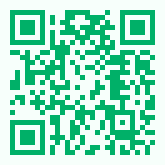怎么理解Self-supervised learning?它是supervised和unsupervised的混合体呢还是等价于semi-supervised呢?
2个回答
self-supervised不同于semi-supervised。Chollet的keras的那本书里的原话是
“This is actually a specific instance of supervised learning, but it different enough that it deserves its own category. Self-supervised learning is supervised learning without human-annotated labels. There are still labels involved (since the learning has to be supervised by something), but they are generated from the input data itself, typically using a heuristic algorithm. You can think of it as supervised learning without any humans in the loop. For instance, "autoencoders" are a well-known instance of self-supervised learning, where the generated targets are... the input themselves, unmodified. In the same way, trying to predict the next frame in a video given past frames, or the next word in a text given previous words, would be another instance of self-supervised learning (temporally supervised learning, in this case: supervision comes from future input data). Note that the distinction between supervised, self-supervised and unsupervised learning can be blurry sometimes—these categories are more of continuum without solid frontiers. Self-supervised learning can be reinterpreted as either supervised or unsupervised learning depending on whether you pay attention to the learning mechanism or to the context of its application.”
大意就是说self-supervised和监督式、无监督式的区别是模糊的。self-supervised的意思就是不需要人工给数据打标签,自己从training data里学习,他举的例子是自编码器。我个人觉得嘛,自编码器更多的还是无监督式的吧。
SofaSofa数据科学社区DS面试题库 DS面经这里有两个层次的supervise,它们的主语分别是是“人”和“label”。第一层主语是人,按是否人或手工label参与到学习,分为supervised/unsupervised。第二层主语是label,把unsupervised再细分,按有无自动生成的label用于loss function,分为self supervised和unsupervised,比如autoencoder和kmeans。
如果主语不明确,不知道谁去监督,概念就混淆了。
SofaSofa数据科学社区DS面试题库 DS面经
 相关讨论
相关讨论 随便看看
随便看看